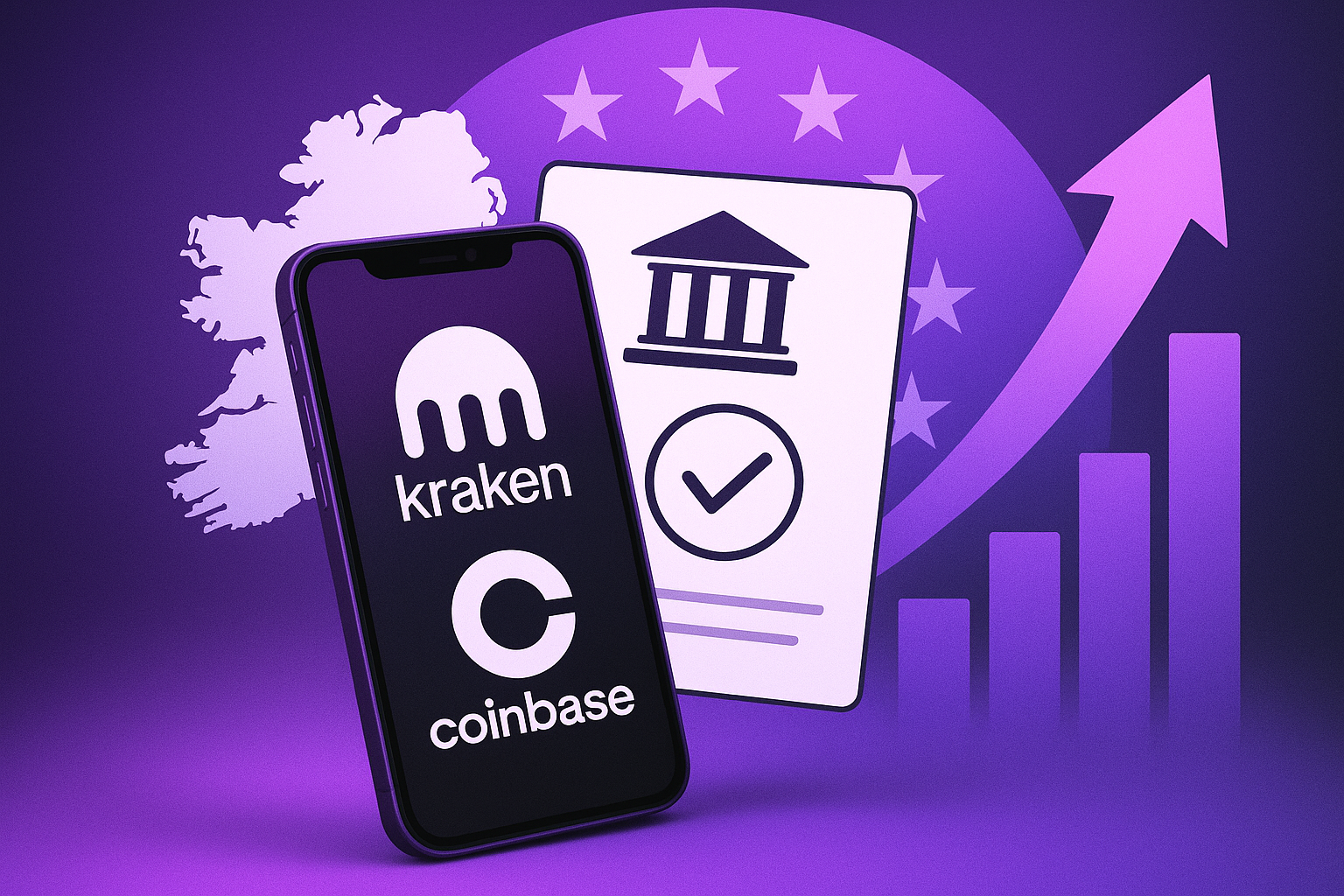Let’s Start With the Unpopular Take
I know everyone’s clapping for Kraken today, but I’ll be the first to admit I felt a twinge of, “Wait, another license headline?” The timeline is flooded with compliance victories lately, and part of me worries we’re normalizing red tape as a metric for innovation. Still, the more I dug in, the more I realized this one matters—especially for the European degens in our Telegram chats who’ve been asking when they can ditch three different exchanges for one.
Here’s What Actually Happened
On Tuesday, Kraken’s Irish entity—officially Payward Europe Solutions Limited—secured registration as a Virtual Asset Service Provider (VASP) with Ireland’s Central Bank. Under the EU’s passporting framework, that stamp lets Kraken serve users in all 27 EU member states. Coinbase grabbed a similar registration last December, so Kraken is clearly sprinting to keep the rivalry interesting before Europe’s new MiCAR rulebook fully kicks in next year.
Quick fact drop:
- Registration approved: 18 April 2024
- Regulator: Central Bank of Ireland (CBI)
- Scope: Exchange, custody, OTC, fiat gateways, plus staking where local rules permit
- Kraken’s reported EU volume (2023): €46 billion according to Kaiko—roughly one-third of Coinbase’s regional numbers
Community Chatter: No Shortage of Hot Takes
“Irish reg is the golden ticket. With MiCAR looming, you need an EU base camp or you’re toast.” —@RegRabbit, compliance nerd on X
“Nice win, but if Kraken can’t match Coinbase’s mobile UX, I’m not leaving.” —Laura from the Paris ETH meet-up
I jumped into the r/EuropeCrypto thread to see what the hive mind thinks. Half the comments celebrate an easier fiat offramp; the other half groan about yet another KYC spree. Honestly, both camps have a point. I like Kraken’s security record, but their verification funnels can feel like opening a bank account circa 1999.
Why This Matters for Your Portfolio
Regulated on-ramps do more than keep auditors happy. They unlock actual liquidity. Remember January’s Solana rally? A bunch of EU traders told me they sat it out because their local exchange delayed withdrawals for “enhanced due diligence.” If Kraken’s passporting works as advertised, a French user should be able to move USDC to their DeFi wallet in minutes, not days. That speed can be the difference between catching the candle or watching it disappear on TradingView.
Plus, Irish regulation is quietly turning Dublin into the next fintech hive. Stripe’s tax engineers are neighbors with Kraken’s lawyers now. In my experience, when you pack coders and compliance people into the same district, you get quirky but powerful products. I wouldn’t be shocked if we see euro-denominated staking pools or MiCAR-friendly token launches coming out of Dublin before Christmas.
The Coinbase Elephant in the Room
Let’s not dodge it: Coinbase still owns an estimated 43% of EU spot volume per CCData’s Q1 numbers. Kraken sits around 17%. The distance looks wide, but 17% was only 11% a year ago. In plain English, Kraken’s catching up.
Where the two differ most is retail onboarding. Coinbase’s slick “buy with Apple Pay” button keeps normies locked in. Kraken answers with lower fees and a pro terminal that doesn’t crash when Bitcoin breaks $70k (I’m looking at you, Coinbase Pro farewell party). If Kraken wants to close the gap, they’ll need to polish the UX without scaring away the OGs who love their retro order book aesthetic.
Tangential Thought: The MiCAR Countdown
Now here’s the interesting part: the industry is treating Irish VASP status like a dress rehearsal for MiCAR, the EU’s mega-framework arriving in phases between mid-2024 and 2025. I’ve noticed a subtle flex from exchanges—“Look, we’re already blessed by Dublin, therefore we’ll ace MiCAR.” Maybe, but MiCAR introduces strict white-paper requirements for token issuers and tough stablecoin caps. Even licensed exchanges will be juggling new disclosures. I’m bullish on responsible compliance, but I’m bracing for a wave of delistings when the rulebook crystallizes.
What the Builders Are Whispering
I pinged a dev friend who’s prototyping an EU-centric DeFi aggregator. He said the Kraken news “unlocks a bigger fiat API surface.” Translation: integrating Kraken’s rails means users can zap euros directly into yield farms without hopping through USDC conversions. If you run a small protocol, that matters because your churn usually lives in the deposit friction, not the smart-contract UI.
Potential Downsides We Can’t Ignore
Yes, regulation is better than chaos, but let’s level with each other:
- Data Honeypot: More IDs, more selfies, more biometric risk. I still save my old Kraken verification screenshots in an encrypted drive, just in case.
- Fee Drift: Licenses cost money. Someone’s paying—probably us—unless Kraken scales volume fast enough to absorb it.
- Service Parity: Irish registration doesn’t auto-enable staking in Germany or futures in France. National competent authorities retain veto power, so a user’s experience will still vary by passport.
So, Should You Care?
If you’re EU-based and tired of bouncing between Binance, Bitstamp, and a questionable Estonian wallet, yes, this is good news. If you’re outside Europe, it still matters because global liquidity is a network effect. More robust euro pairs often translate to tighter spreads on BTC/USDT and ETH/USDC everywhere else. Plus, watching Kraken and Coinbase slug it out usually ends with feature upgrades we all benefit from—think last year’s fee wars.
My Closing Reflection
I’ll confess, regulatory milestones rarely spark joy for me. They read like HR memos. But this one feels different because it hints at an era where European crypto isn’t perpetually a quarter-step behind the U.S. or Asia. As someone who travels between Lisbon and Berlin with a Ledger in my carry-on, the idea of one compliant exchange that “just works” across borders is liberating.
Is Kraken the answer? We’ll see. At minimum, they’re now in the room where decisions are made, and that beats shouting from the hallway.



